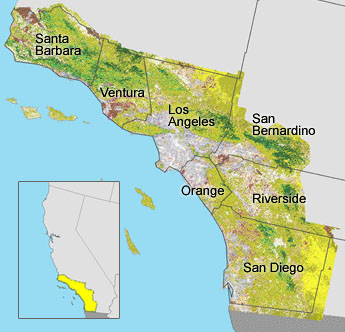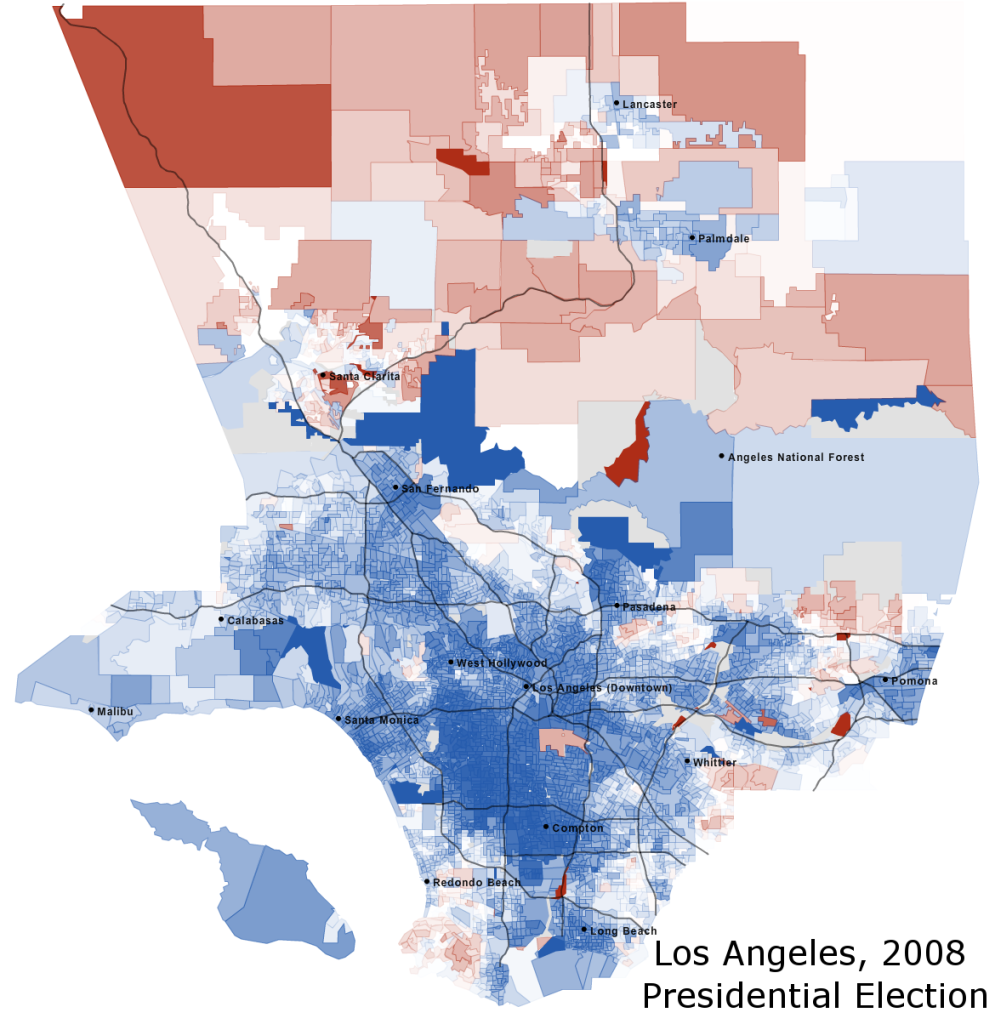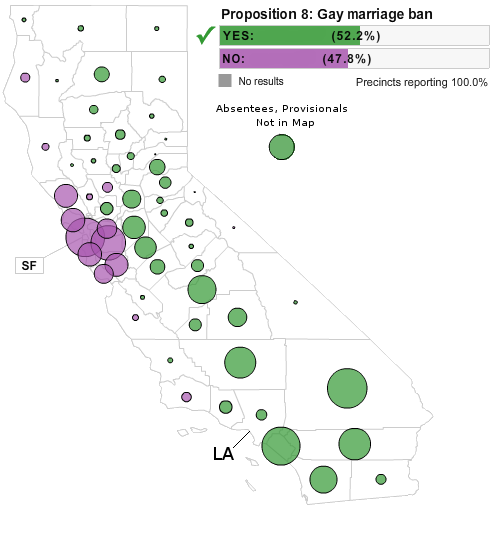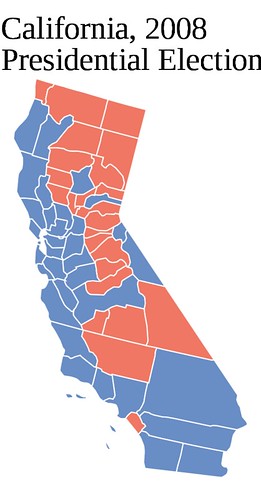I was originally typing this as a comment in the open thread, but saw it grow and grow to the point that I decided to write a diary comparing my predictions to the actual results. Overall, my predictions statewide were pretty much spot-on. I may have been off by a few percentage points in the statewide races, but not too shabby. The district races and ballot measures, on the other hand, some were way off due to lack of polling and information. Without further Apu, here goes.
Governor – Likely to Strong Brown; Brown by 14.33% in my number predictions – (Brown by 11.9%) – pretty close though a little less than I was hoping for with the way voters were pissed at Whitman running ads nonstop
Lt. Gov. – Lean Newsom – (Newsom by 10.4%) – looks like I underestimated Newsom, especially with a rare moderate and Hispanic Republican who was also the quasi-incumbent. Being associated with “16%” Arnold likely turned out to be the drag I predicted
Attorney General – Toss-Up – (Still not yet called with Cooley leading by 0.3%) – right on the mark here, regardless of whether it ends up being Harris (please!) or Cooley; I’m a nervous wreck watching this one seesaw back and forth!
Secretary of State – Solid Bowen – (Bowen by 15.8%) – little less than predicted but still good
Treasurer – Solid Lockyer – (Lockyer by 19.7%) – almost on the mark
Controller – Strong to Solid Chiang – (Chiang by 18.1%) – almost on the mark here too
Insurance Commissioner – Likely to Strong Jones – (Jones by 12.6%) – another one that was reasonably on target
School Superintendent – Toss-Up – (Torlakson by 9.4%) – didn’t have much information so I just threw a prediction out there
The ballot measures I was mostly WAY off; they were mostly shots in the dark due to a dearth of information about how they were faring, because 19, 23, and 25 stole the show. Maybe from now on I’ll just give my recommendations.
Prop 19 – Lean Yes – (No by 8%)
Prop 20 – Toss-up/lean No – (Yes by 22.8%)
Prop 21 – Toss-up – (No by 16.8%)
Prop 22 – Toss-up/lean No – (Yes by 22%)
Prop 23 – Likely No – (No by 22.4%) – wow, this of all ballot measures was where I was actually close!
Prop 24 – Toss-up – (No by 17.2%)
Prop 25 – Likely Yes – (Yes by 9.4%) – then again, with this, 19, and 23 gobbling up all the airtime, it should have been easier to predict these than the other 6
Prop 26 – Toss-up – (Yes by 4.6%) – not too shabby for a ballot measure that received little attention
Prop 27 – Toss-up – (No by 19.2%)
U.S. Senate – Lean Boxer; Boxer by 6.67% – (Boxer by 9.4%) – I knew all along that Boxer would put up a helluva fight and win similar to 1998.
CA-03 – Toss-Up/Tilt Lungren; Lungren by 3.75% – (Lungren by 7.9%) – a little off, but I knew it was still a fight, and putting resources into this race may have helped us downticket in AD-05
CA-11 – Lean McNerney; McNerney by 2.75% – (McNerney by 0.3%; by 421 votes with thousands more still to be counted) – closer than predicted
CA-18 – Likely Cardoza; Cardoza by 10.75% – (Cardoza by 15%) – better than predicted
CA-20 – Lean Costa; Costa by 2.75% – (Vidak by 0.2% pending absentee ballot counts)
CA-44 – Lean to Likely Calvert; Calvert by 13.17% – (Calvert by 11%) – another bull’s-eye; a shame we didn’t invest more here after 2008
CA-45 – Likely Bono Mack; Bono Mack by 15% – (Bono Mack by 10.1%) – a little less than predicted but hey, I’m not complaining!
CA-47 – Lean Sanchez; Sanchez by 8.25% – (Sanchez by 8.7%) – pretty close to the mark here
SD-12 – Toss-up/tilt Caballero – (Cannella (R) by 6%) – have to look into this one a bit more deeply
SD-34 – Likely Correa – (Correa (D) by 27%) – guess I took his near-loss in 2006 a bit too seriously
AD-05 – Toss-up – (Pan (D) by 2.8%) – one of those toss-ups that is great to see…one that breaks our way!
AD-10 – Toss-up/tilt Huber – (Huber (D) by 7.8%) – similar to Correa
AD-15 – Tilt/lean Buchanan – (Buchanan (D) by 5%) – another bull’s-eye
AD-30 – Lean Valadao – (Valadao (R) by 24.6%) – way off here. I guess from now on, anybody but a Florez or a Parra! Not sure if Dean Florez plans on running for CA-20 if Vidak does win or when Costa retires (if he does hold on this year).
AD-33 – Lean Achadjian – (Achadjian (R) by 21.2%) – looks like I was right in saying we have a long way to go in the southern Central Coast outside Santa Barbara.
AD-36 – Lean to Likely Knight – (Knight (R) by 15.8%) – should have gone with police officer Watkins in the primary
AD-68 – Lean Mansoor – (Mansoor (R) by 11.8%) – Nguyen was a great candidate, but we still have a lot of work to do to win in OC outside Santa Ana/Anaheim.
AD-70 – Lean to Likely Wagner – (Wagner (R) by 20.9%) – I thought a close race in this district with Fox’s stronger-than-average campaign and Wagner’s presence (or lack thereof) seemed too good to be true. While Obama won this Newport Beach-centric district, we still have work to do to build up the D bench here.
And finally, some races that were not on my radar screen but from what I had heard may have been in trouble should have been paid more attention:
AD-35 – (Williams (D) by 8%) – This is a very Democratic area; what happened? Was turnout here very low too? The Dem numbers in Santa Barbara seem much smaller than usual; usually SB is about on par with California as a whole. A California political neophyte who only saw these election results would think Santa Barbara was a swing county, rather than being a bellwether for how the state goes.
AD-53/54 – (Butler (D) by 7%/Lowenthal (D) by 13%) – Was turnout in the normally Democratic South Bay L.A., despite fellow South Bayers Bowen and Chiang winning in landslides at the top of the ticket, depressed too?













